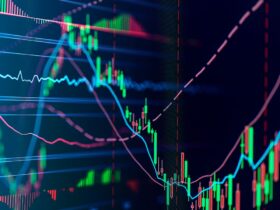A trading robot is a computer program that creates orders and automatically submits them to a market centre or exchange. These sophisticated algorithms analyse market data, identify trading opportunities, and execute trades based on predefined rules and parameters. Trading robots offer several advantages that complement traditional investment strategies:
- Emotion-free trading – Robots execute trades based on pre-set rules, eliminating emotional decision-making that can often lead to costly mistakes.
- Speed and efficiency – Automated systems analyze vast amounts of data and execute trades in milliseconds faster than any human trader.
- 24/7 market monitoring – Trading robots monitor markets around the clock, capitalizing on opportunities that may arise outside of regular trading hours.
- Backtesting capabilities – Most trading robot platforms allow users to test their strategies on historical data, providing valuable insights before risking natural capital.
- Diversification – Robots monitor and trade multiple markets or instruments simultaneously, facilitating portfolio diversification.
Traditional investment strategies
Before exploring integration techniques, let’s review some common traditional investment strategies:
- Value investing – Focusing on undervalued assets with solid fundamentals.
- Growth investing – Targeting companies or assets with high growth potential.
- Income investing – Prioritizing investments that generate regular income, such as dividend stocks or bonds.
- Momentum investing – Capitalizing on existing market trends.
- Contrarian Investing – Taking positions opposite to prevailing market sentiment.
Integrating trading robots with traditional strategies
The key to successful integration lies in using trading robots to enhance, rather than replace, traditional investment approaches. The following are some ways of achieving this integration:
Automated screening and idea generation
Trading robots are programmed to scan markets based on criteria aligned with traditional investment strategies. For example:
- Value investing – A robot could scan for stocks with low price-to-earnings ratios, high dividend yields, or other value metrics.
- Growth investing – Algorithms identify companies with consistently high revenue growth rates or expanding market share.
- Momentum strategies – Robots easily detect assets showing strong price momentum or breaking out of critical technical levels.
By using Forex flex ea trading robots for initial screening, investors more efficiently identify potential opportunities that align with their traditional investment thesis.
Execution optimization
Even when investment decisions are made based on traditional analysis, trading robots can optimize the execution process:
- Time-based execution – Robots are programmed to execute trades at specific times when market liquidity is typically higher, potentially reducing slippage.
- Volume-weighted average price (VWAP) strategies – For large orders, robots break them into smaller parts and execute them over time to achieve a favourable average price.
- Arbitrage opportunities – Robots quickly identify and exploit price discrepancies across different markets or related securities in multi-asset strategies.
High-frequency trading complement
While many traditional strategies focus on longer-term investments, integrating a high-frequency trading robot adds a complementary short-term component to the portfolio:
- Use robots for short-term mean reversion trades within a longer-term trend-following strategy.
- Implement statistical arbitrage strategies alongside fundamental long-term holdings.
- Employ high-frequency strategies to generate additional income from a core long-term portfolio.
Sentiment analysis and alternative data processing
Modern trading robots can analyze vast amounts of alternative data to complement traditional fundamental and technical analysis:
- Process news feeds and social media sentiment to gauge market mood.
- Analyze satellite imagery or credit card transaction data for real-time economic insights.
- Monitor options market activity for insights into market expectations.
Integrating trading robots with traditional investment strategies represents a powerful synergy between human expertise and technological capabilities. Investors enhance their overall performance by leveraging the strengths of automated systems, such as speed, consistency, and data processing power, while maintaining the insights and nuanced decision-making of traditional approaches.








